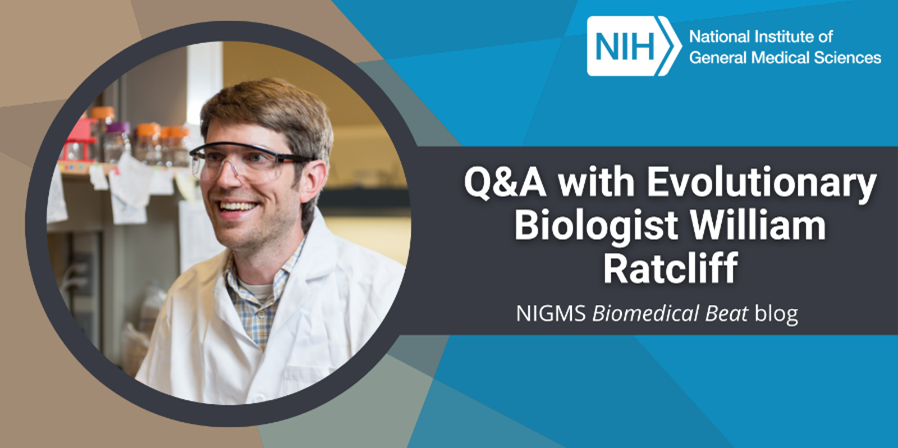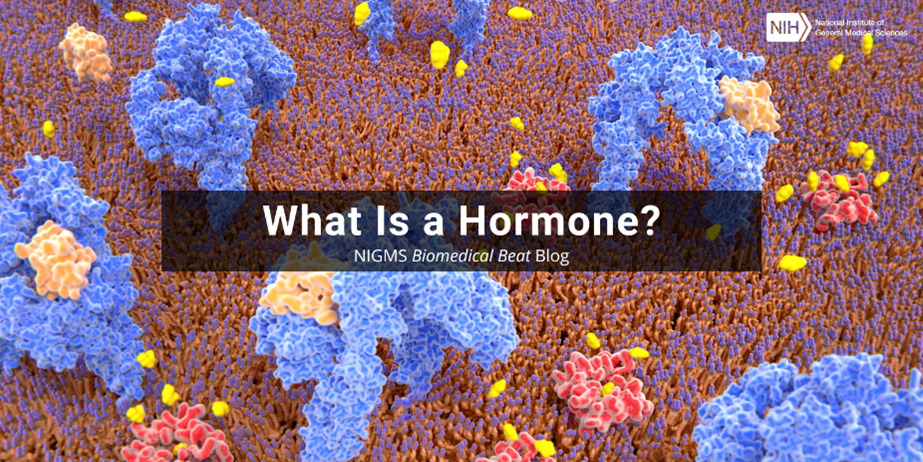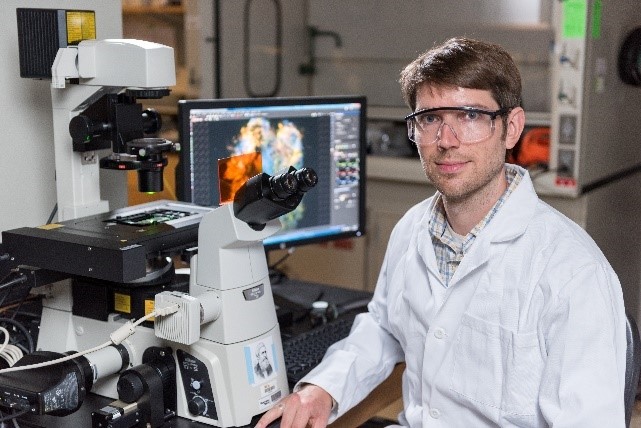
“Being a researcher is special because there aren’t many jobs that allow you to spend the majority of your time thinking about the things you find the most interesting in the whole world,” says William Ratcliff, Ph.D., an associate professor of biological sciences and the director of the interdisciplinary graduate program in quantitative biosciences at Georgia Institute of Technology (Georgia Tech) in Atlanta. We talked with Dr. Ratcliff about his career path, research on yeast, and advice to budding scientists.
Q: How did you first become interested in science?
A: My family owns land in Northern California that has been passed down for more than 100 years. When I was a child, my brother and I would spend summers on that land getting lost in the woods. We would really see the forest for its parts: seeing how organisms interacted with one other, tracking stages of development, and listening to birdcalls. My grandmother would identify plants by their scientific names, and we’d discuss their reproduction strategies. We became amateur natural historians during those summers. Perhaps it’s no surprise my brother and I both got Ph.Ds. in biology.
Q: What path did you take in becoming a scientist?
A: My lifelong love for plants led me to pursue a plant biology undergraduate degree at the University of California, Davis. Through my biology courses there, I became very interested in ecology and evolution. Dr. Ford Denison taught my favorite course at the time. I knew his lab was doing cool research on the symbiosis between plants and bacteria, so I approached him about working as a research technician when I graduated. Six months later, when his lab moved to the University of Minnesota (UMN), I joined as a Ph.D. student studying the delicate balance of these symbiotic relationships.
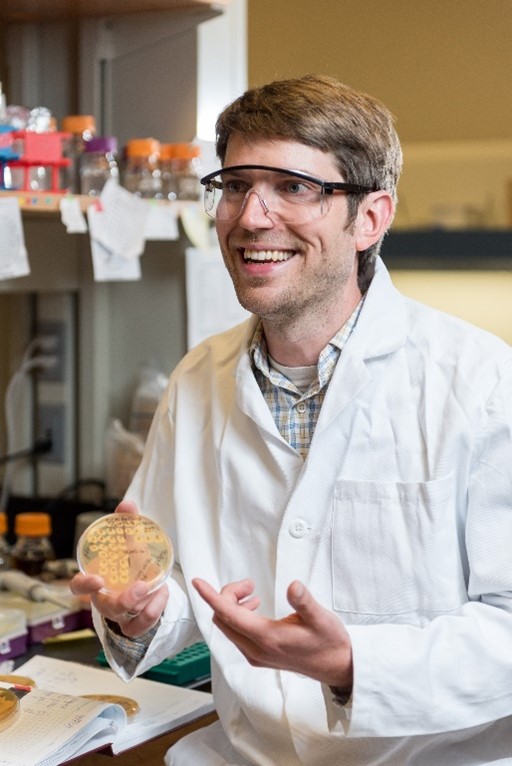
Late in my Ph.D., Dr. Michael Travisano joined the faculty at UMN. He studies microorganisms using long-term directed evolution—a type of experiment where researchers apply a specific pressure, such as withholding an important nutrient, to organisms to cause evolutionary change. One day over coffee, Dr. Travisano and I came up with the wild idea of trying to evolve multicellular organisms from scratch. From there, I developed the Multicellularity Long-Term Evolution Experiment (MuLTEE) at UMN as a postdoctoral researcher (postdoc) with Dr. Travisano. Two years later, I accepted a faculty position at Georgia Tech.
Q: What are you researching in your lab?
A: My lab’s research continues the work I started as a postdoc. We focus on the evolution of multicellularity—the essential step in the formation of complex life on Earth whereby ancient single-celled organisms formed groups, and then those groups began to evolve as multicellular organisms. During this process, cells gained variations in their DNA that made them more adapted to multicellular life. While multicellularity has evolved dozens of times, we still have much to learn about the fine details of how simple clumps of cells develop into increasingly sophisticated bodies, and my lab is particularly interested in the origin of multicellular development.
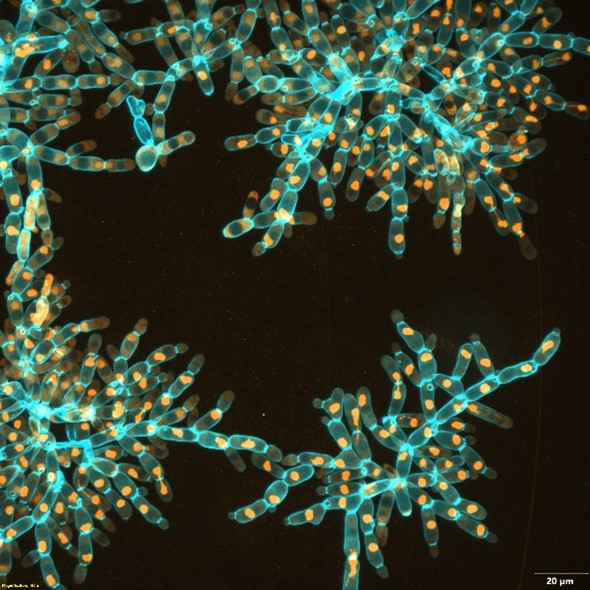
This subject is difficult to study in nature because it occurred hundreds of millions of years ago. But using the MuLTEE system, we can recreate this transition in the research organism Saccharomyces cerevisiae (S. cerevisiae), a single-celled yeast. The first step in the evolution of multicellularity is forming a group of cells. Big groups of yeast cells sink faster through their liquid growth medium than smaller ones, and after selecting the heaviest clusters to continue growing, our populations were soon entirely composed of a new form of
S. cerevisiae—snowflake yeast—that had adapted to grow as branching, spherical clusters made up of multiple attached cells. One especially exciting part of this finding was that these cells weren’t clumping—they were strings of genetically identical cells whose adaptations allowed them to stay attached to their parent cells after division. We actually recreated the evolution of multicellularity in the lab!
I couldn’t have predicted any of the things that snowflake yeast have done, and that’s why I call the MuLTEE system a hypothesis-generating machine—the yeast are far more creative than I will ever be. They’re constantly surprising us and have led to a number of fundamental discoveries about how multicellularity can evolve, such as how the precise orientation of cells in a cluster creates the first multicellular life cycles. Over thousands of generations of evolution, our yeast formed vastly tougher bodies; while they started out weaker than gelatin, they ultimately evolved to become as strong and tough as wood. They accomplished this through clever biophysical tricks, such as changing the way that cells interact within the center of a cluster. Right now, we’re exploring the origin of cellular differentiation and the evolution of multiple cell types.
Over the remaining 30 years of my career, I want to see how far we can push this system and how sophisticated snowflake yeast ultimately evolve to be. If I didn’t push them as far as I could, I’d always regret it.
Q: What do you consider your biggest accomplishment so far in your career?
A: When I started trying to evolve multicellularity, we faced a fair amount of pushback from people who didn’t think snowflake yeast were “really” multicellular or simply dismissed the entire approach as being unrealistic over short timeframes. It was really discouraging and made me question my career choices. Thankfully, that mindset has completely changed in the last decade, and several junior scientists are beginning to use directed evolution to study major evolutionary transitions—from the origin of life to the creation of new kinds of organisms. It’s been important to show that, over thousands of generations, snowflake yeast are dynamic—capable of open-ended multicellular evolution and innovation. I’m proud that our work has helped create an atmosphere in which young researchers are comfortable applying this approach to answer big and interesting questions.
Q: What makes a career in science exciting?
A: On a personal level, I love mentoring and training new scientists, and I’ve become dear friends with colleagues through decades-long active collaborations. More broadly, science provides the opportunity and resources to explore otherwise unreachable areas of knowledge, with the potential to have considerable impacts on society. On most days I feel like an explorer, albeit one who has to respond to a lot of emails.
Q: What advice would you give someone starting a career in science?
A: Don’t give up if your first research experience isn’t great—the lab may not have been a good fit. Earning a Ph.D. is a marathon, so take time to recharge when you need it. Learn to write well and give killer talks. Papers and talks are your interface with the world and the basis on which others will judge the quality of your work. And most importantly, be cool to your fellow scientists. Collaborate. Be inclusive and generous. It will make you happier and will lead to more interesting and productive science than being territorial and competitive.
Dr. Ratcliff’s research is supported by the NIGMS Maximizing Investigators’ Research Award program through grant R35GM138030.


